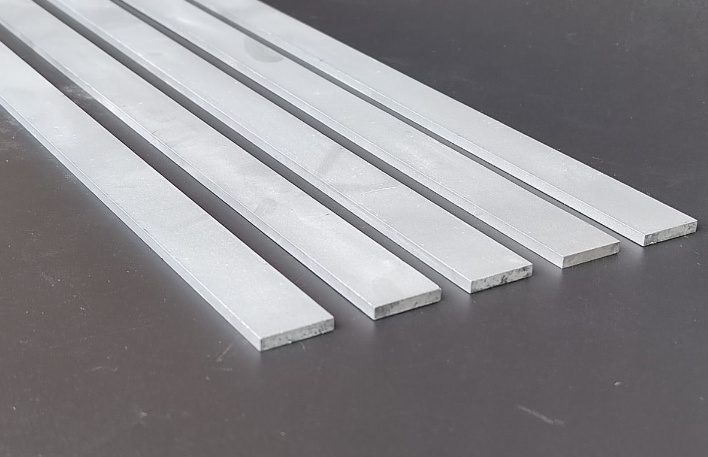Carbide strips – those unassuming slivers of super-hard material – are the silent workhorses behind countless industrial processes. While they might not grab the headlines, their ability to cut, shape, and withstand extreme conditions makes them indispensable in a surprising array of applications. Join us as we journey into the world of carbide strips, uncovering their secrets and exploring their primary uses.
What Exactly are Carbide Strips?
Imagine a material so hard it rivals the strength of diamond. That’s the essence of carbide strips. These thin, flat pieces are crafted from cemented carbide, a composite material renowned for its exceptional hardness and wear resistance. The magic lies in their composition:
- Tungsten Carbide: The superstar ingredient, known for its extreme hardness (almost as hard as diamond!), forms the backbone of the material.
- Cobalt Binder: Acting like a glue, cobalt binds the tungsten carbide particles together, providing strength and toughness.

The Making of a Champion: How Carbide Strips are Born
The creation of carbide strips is a testament to precision engineering:
- Powder Power: Finely ground powders of tungsten carbide and cobalt are meticulously blended in precise ratios to achieve the desired properties.
- Under Pressure: The powder mixture is then subjected to immense pressure within specialized molds, forming the initial shape of the strips.
- Fiery Fusion: The pressed strips undergo a high-temperature sintering process in a controlled atmosphere. This intense heat fuses the cobalt binder, solidifying the strip into a dense, incredibly hard material.
- Polishing Perfection: After sintering, the strips may undergo additional processing, such as grinding, polishing, or coating, to refine their surface finish, dimensions, and enhance specific properties.
A Strip for Every Need: Types and Properties
Carbide strips aren’t one-size-fits-all. They come in various grades, sizes, and configurations, each tailored for specific applications. Here’s a glimpse into their diversity:
Carbide Strip Properties: A Snapshot
| Property | Description | Typical Values |
|---|---|---|
| Hardness (HRA) | Resistance to scratching and indentation | 88-95 |
| Transverse Rupture Strength (TRS) | Ability to withstand bending forces without breaking | 1500-3000 N/mm² |
| Density | Mass per unit volume | 13.5-15.0 g/cm³ |
| Grain Size | Size of the tungsten carbide particles, influencing hardness and wear resistance | 0.5-10 µm |
| Cobalt Content | Percentage of cobalt binder, impacting toughness and wear resistance | 6-12% |
Table 1: Key Properties of Carbide Strips
Primary Applications of Carbide Strips
Carbide strips’ exceptional properties make them ideal for demanding applications where durability, precision, and longevity are paramount. Let’s explore their primary domains of dominance:
1. Woodworking: Taming the Timber
- Saw Tips: Carbide strip form the cutting edges of circular saw blades, miter saw blades, and table saw blades, enabling clean, precise cuts in hardwoods, plywood, and composites.
- Router Bits: Carbide inserts in router bits provide sharp, long-lasting cutting edges for shaping, profiling, and joinery in woodworking projects.
2. Metalworking: Shaping Steel with Finesse
- Cutting Tools: Carbide inserts are crucial components in lathe tools, milling cutters, and other metal cutting tools, enabling the machining of various metals with high precision and efficiency.
- Wear Parts: Carbide strip are used to create wear-resistant components in metal forming dies, punches, and other tooling, extending their lifespan and maintaining dimensional accuracy.
3. Construction: Conquering Concrete and Beyond
- Concrete Sawing: Segments of carbide strip form the cutting teeth of concrete saw blades, enabling the cutting of concrete, asphalt, and other hard construction materials.
- Drilling and Boring: Carbide inserts are used in drill bits, core bits, and other drilling tools for penetrating concrete, rock, and other challenging materials.
4. Other Industries: Expanding Horizons
The applications of carbide strip extend far beyond these primary industries. Their unique properties make them valuable in:
- Manufacturing: Wear-resistant guides, tooling components, and cutting edges for various manufacturing processes.
- Agriculture: Tillage tools, wear parts for agricultural machinery, and components for processing crops.
- Printing and Packaging: Cutting blades, creasing rules, and other wear-resistant parts for printing presses and packaging equipment.
FAQs: Unraveling the Mysteries of Carbide Strips
1. What makes carbide strips so hard?
The extreme hardness of carbide strip primarily stems from the tungsten carbide particles within their structure. Tungsten carbide is one of the hardest materials known, second only to diamond.
2. Can carbide strips be sharpened?
Yes, carbide strip can be sharpened using specialized diamond grinding wheels and equipment. However, maintaining the correct angles and clearances during sharpening is crucial for optimal performance.
3. What are the advantages of using carbide strips in cutting tools?
Carbide strip offer several advantages in cutting tools, including:
– Increased Hardness and Wear Resistance: Enabling longer tool life and reduced downtime for sharpening.
– Higher Cutting Speeds and Feeds: Allowing for faster material removal rates and increased productivity.
– Improved Cut Quality: Producing cleaner, more precise cuts with less chipping or tearing.
4. Are there any safety concerns when working with carbide strips?
Due to their extreme hardness, carbide strip can be brittle and may shatter if dropped or mishandled. Always wear safety glasses, gloves, and appropriate clothing when handling carbide strip.
5. How do I choose the right carbide strip for a specific application?
Selecting the appropriate carbide strip involves considering factors such as:
– Material Being Cut: Different carbide grades are optimized for cutting specific materials (e.g., wood, metal, concrete).
– Cutting Conditions: Cutting speed, feed rate, and depth of cut influence the choice of carbide grade and geometry.
– Desired Tool Life: Applications requiring longer tool life may benefit from higher-grade carbide strip.
Consulting with a carbide supplier or tooling expert can provide valuable guidance in selecting the optimal carbide strip for your needs.
Want to buy Carbide Strips at a good price? Please click here.




